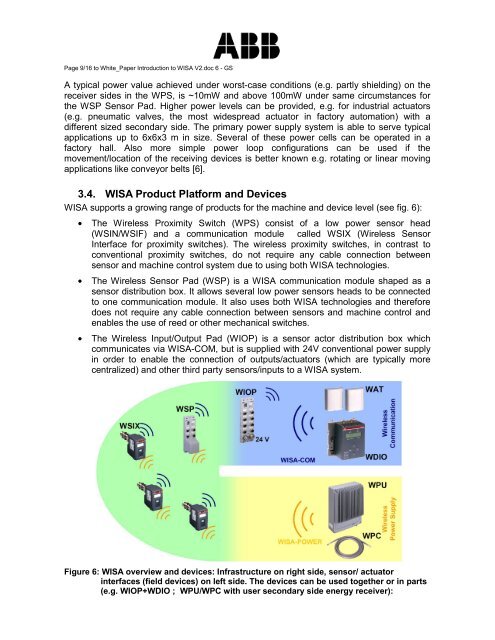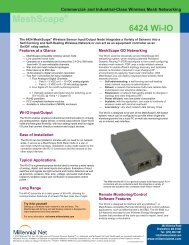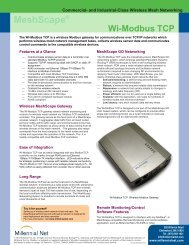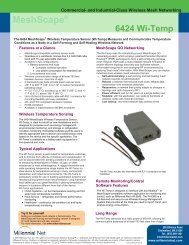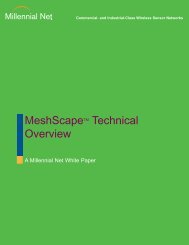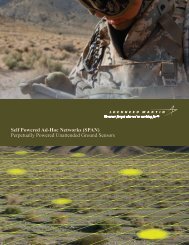Introduction to WISA - Millennial Net
Introduction to WISA - Millennial Net
Introduction to WISA - Millennial Net
- No tags were found...
You also want an ePaper? Increase the reach of your titles
YUMPU automatically turns print PDFs into web optimized ePapers that Google loves.
Page 9/16 <strong>to</strong> White_Paper <strong>Introduction</strong> <strong>to</strong> <strong>WISA</strong> V2.doc 6 - GSA typical power value achieved under worst-case conditions (e.g. partly shielding) on thereceiver sides in the WPS, is ~10mW and above 100mW under same circumstances forthe WSP Sensor Pad. Higher power levels can be provided, e.g. for industrial actua<strong>to</strong>rs(e.g. pneumatic valves, the most widespread actua<strong>to</strong>r in fac<strong>to</strong>ry au<strong>to</strong>mation) with adifferent sized secondary side. The primary power supply system is able <strong>to</strong> serve typicalapplications up <strong>to</strong> 6x6x3 m in size. Several of these power cells can be operated in afac<strong>to</strong>ry hall. Also more simple power loop configurations can be used if themovement/location of the receiving devices is better known e.g. rotating or linear movingapplications like conveyor belts [6].3.4. <strong>WISA</strong> Product Platform and Devices<strong>WISA</strong> supports a growing range of products for the machine and device level (see fig. 6):• The Wireless Proximity Switch (WPS) consist of a low power sensor head(WSIN/WSIF) and a communication module called WSIX (Wireless SensorInterface for proximity switches). The wireless proximity switches, in contrast <strong>to</strong>conventional proximity switches, do not require any cable connection betweensensor and machine control system due <strong>to</strong> using both <strong>WISA</strong> technologies.• The Wireless Sensor Pad (WSP) is a <strong>WISA</strong> communication module shaped as asensor distribution box. It allows several low power sensors heads <strong>to</strong> be connected<strong>to</strong> one communication module. It also uses both <strong>WISA</strong> technologies and thereforedoes not require any cable connection between sensors and machine control andenables the use of reed or other mechanical switches.• The Wireless Input/Output Pad (WIOP) is a sensor ac<strong>to</strong>r distribution box whichcommunicates via <strong>WISA</strong>-COM, but is supplied with 24V conventional power supplyin order <strong>to</strong> enable the connection of outputs/actua<strong>to</strong>rs (which are typically morecentralized) and other third party sensors/inputs <strong>to</strong> a <strong>WISA</strong> system.Figure 6: <strong>WISA</strong> overview and devices: Infrastructure on right side, sensor/ actua<strong>to</strong>rinterfaces (field devices) on left side. The devices can be used <strong>to</strong>gether or in parts(e.g. WIOP+WDIO ; WPU/WPC with user secondary side energy receiver):


